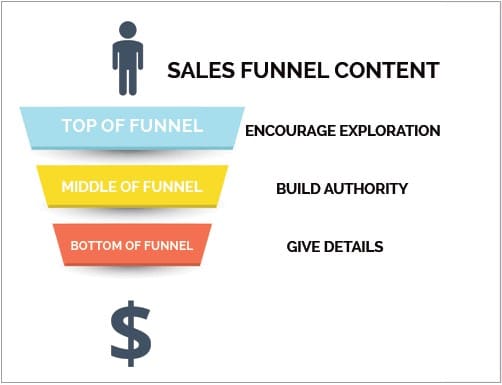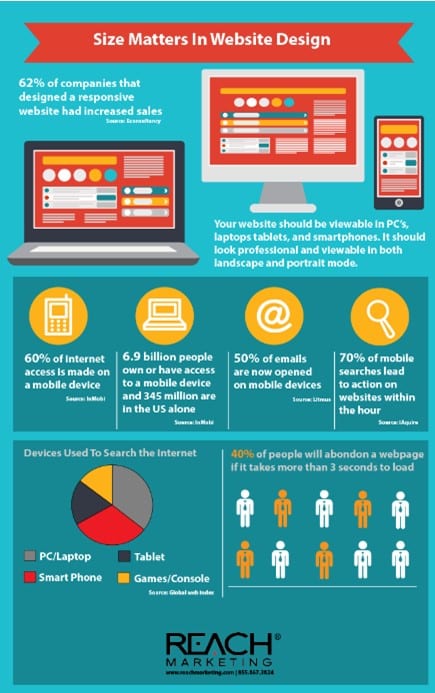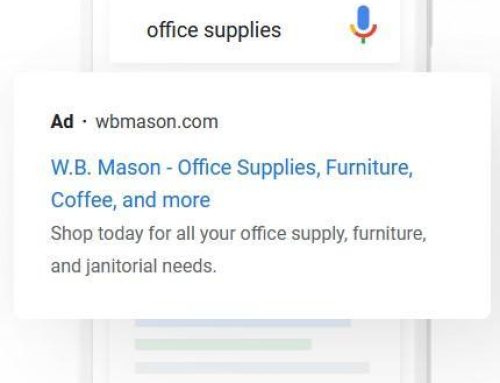To increase B2B sales, you must have a well-performing lead generation process that will align marketing and sales so they can work as a team to win customers. By understanding the process in a simple funnel, you can track where your prospects are in the journey, send them appropriate content and website links, then get them over to sales when they are ready to consider a purchase. Our first tips center around the sales funnel concept:
- Break down the buyer’s journey.
It’s critically important to understand the modern B2B buyer’s journey, the process through which a prospect is identified first as a qualified lead, then as a prospect that needs to be nurtured, and eventually as a buyer and a loyal repeat customer. It’s helpful when considering which tactics best suit your team’s goals.
- The prospect moves through three distinct stages of the sales funnel:
- Top of Funnel – Attract prospects, encourage exploration, and capture contact info. At this early stage, the goal is to catch a prospect’s attention with content that interests, educates, and builds awareness around a business challenge that you can solve. Good options for top-of-funnel content include articles, short-form social media blasts, SEO articles, overview blog posts, infographics, brief YouTube videos, and promotions. The goal is for them to want to share their contact information with you so you can move together to the next step in the funnel.
- Middle of Funnel – Nurture and engage prospects as you build authority. Now that the candidate has shared their contact information, thus indicating their interest, it’s time to start building a trusted relationship by sharing thoughtfully crafted content, informative resources, and offers to help them decide to buy. Middle-of-funnel content can include comprehensive blog posts, calculators and self-tests, ebooks, white papers, articles, subscription-based content, newsletters, and incentives to buy now.
- Bottom of Funnel – Convert prospects to customers with details and answers. At this late stage in the journey through your sales funnel, it’s time to get down to details and specifics about why your services or products are the best and only choice. At this point, it’s a given these clients are considering you, or they wouldn’t have made it this far down the sales funnel. Make sure your content validates that you are the only option. Bottom-of-funnel content often includes case studies, deep-dive webinars, testimonial videos, and pricing promotions.
- Understand your organization’s buyer personas.
It’s also more important than you might think to take the time to create accurate personas for each of your potential customers. Each buyer persona will include a detailed description of people who will use and buy your product. These fictional profiles, ranging from a young specialist to a seasoned CXO, will help you understand the characteristics of each member of your target audience. Once you’ve created these individual buyer personas, you’ll have the ability to develop targeted messages for each segment and increase your chances of connecting because it’s obvious you understand their specific pain points.
Related: B2b Saas Leads
- Website Design
Your website is your digital storefront and the first experience most prospects will have with your brand. From the minute they land on your page, it has to be inviting, memorable, and easy to use, and that all stems from outstanding website design. Consider the tips below to improve your website design:
- Beautify your website
It’s essential to make your website intuitive and inviting. Create a sleek and engaging website design that welcomes visitors and encourages them to convert due to seamless functionality, interactive elements, and eye-catching design.
- Size matters when you’re designing your site.
Check out the infographic below to help you decide which elements you want to include and how large your website will be:
- Watch your conversions soar with powerful landing pages.
Well-performing landing pages include vital information for the visitor and deliver compelling solutions to your visitors’ problems. Make sure your landing pages have the following features so you can attract and convert more B2B leads.
- Visually pleasing content (text and graphics)
- Helpful, informative copy
- SEO-friendly keywords
- Ease of use for visitors
- Feeling of urgency
- Single purpose
- Social proof/testimonials
- Several calls to action throughout the page
- Keep your promise
Your ads connect to landing pages. If your ad offers something, follow through and deliver what you enticed them with. We’ll talk about PPC advertising more in-depth in a bit, but if you’re already using it, make sure your ad leads to a landing page that matches what the ad promised (such as technical information, special offers, free trials, etc.) or they’re likely to leave your site and hop over to your competitor’s.
- Website Optimization
Your users want your website to be attractive, informative, and intuitive. In addition, you need prospects to find you easily, and your site should run smoothly and quickly when they do. When all this is happening, your website is optimized. If any of the above-mentioned “parts” are broken, you can be sure you are losing sales.
Here are some suggestions to help you improve your search engine optimization (SEO) and your website’s chances of landing on page one of search engine results.
Related: Strategies for SaaS Lead Generation
- Get up to speed.
The speed at which your website operates is vital to ensure a positive user experience. If your website speed is slow, you can be sure it negatively affects your bounce rate, not to mention your conversions. On average, if your website takes longer than 3 seconds to load, approximately 40% of your visitors will abandon your site!






